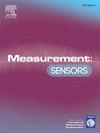通过基于层次链的路由和水平网络分区技术提高无线传感器网络的使用寿命
Q4 Engineering
引用次数: 0
摘要
在无线传感器网络(WSN)中,有效利用能源是延长网络寿命的一个关键环节。研究 WSN 中的路由选择需要考虑有效建立链或聚类方法,以优化网络。所提出的路由技术旨在通过不同的网络划分方法来提高传感器的寿命。该策略采用了 PEGASIS(传感器信息系统中的功率高效聚集)协议,该协议使用普里姆算法调整链结构,并基于分层链式路由。为了从工作节点向基站(BS)传输数据,采用了名为 EEPEG-PA-H 和 EEPEG-PA-V 的水平网络分区技术。当节点的剩余能量较低时,就会发生转换。与现有的路由方法相比,这种方法有可能大大提高网络的平均寿命。例如,与 PEGASIS 相比,EEPEG-PA-H 的寿命提高了 22.7763%,与使用 senor 的 EEPEG-PA 相比,EEPEG-PA-H 的寿命提高了 1.259%。本文章由计算机程序翻译,如有差异,请以英文原文为准。
Enhancing Wireless Sensor Network lifetime through hierarchical chain-based routing and horizontal network partitioning techniques
The efficient use of energy is a critical aspect in Wireless Sensor Networks (WSNs) to prolong the network's lifespan. Investigating routing in WSNs requires considering the effective establishment of chains or clustering methods to optimize the network. The proposed routing technique aims to enhance sensor longevity through different network partitioning methods. The strategy employs the PEGASIS (Power Efficient Gathering in Sensor Information Systems) protocol, which uses Prim's Algorithm to adjust the chain structure and is based on hierarchical chain-based routing. To transmit data from working nodes to the base station (BS), horizontal network partitioning techniques called EEPEG-PA-H and EEPEG-PA-V are utilized. The transition occurs when a node's remaining energy is low. This method has the potential to significantly increase the average network lifespan compared to existing routing methods. For example, EEPEG-PA-H improves longevity by 22.7763 % compared to PEGASIS and by 1.259 % compared to EEPEG-PA across various network sizes using senor.
求助全文
通过发布文献求助,成功后即可免费获取论文全文。
去求助
来源期刊

Measurement Sensors
Engineering-Industrial and Manufacturing Engineering
CiteScore
3.10
自引率
0.00%
发文量
184
审稿时长
56 days
 求助内容:
求助内容: 应助结果提醒方式:
应助结果提醒方式:


